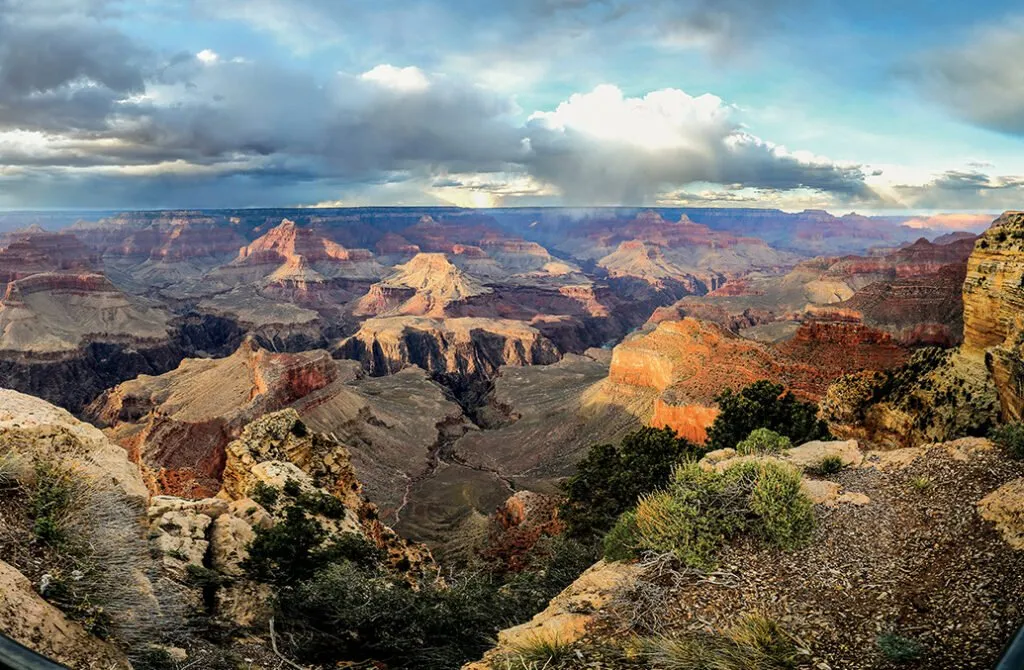Arizona is not just famous for its deserts; it also boasts a unique and diverse high-altitude ecosystem, especially in the Colorado Plateau region. This article serves as a detailed guide to help you fully uncover the stunning natural beauty, learn about its rich biodiversity, and experience exciting activities in Colorado’s high-altitude region. Get ready for an exhilarating and unforgettable adventure!
With a land area of over 113,000 square miles, Arizona is the sixth-largest state in the US, known for its diverse landscapes ranging from arid deserts to majestic mountain ranges. The Colorado Plateau in Arizona embodies an extraordinary ecosystem that offers breathtaking scenery and unique biodiversity. The information in this guide will ensure that you have a fulfilling and meaningful journey.
Discover the Majesty of the Colorado Plateau
The Colorado Plateau spans much of northeastern Arizona, featuring vast highlands, deep canyons, rugged cliffs, and vibrant Ponderosa pine forests. This area is not only known for its spectacular natural views but also serves as home to numerous rare flora and fauna species.
Grand Canyon, one of the world’s most renowned natural wonders, is located within this region and attracts millions of visitors every year. Its awe-inspiring and mystical beauty has served as inspiration for countless works of art and literature. Here, you can marvel at the miles of fiery red-rock cliffs, the winding Colorado River at the canyon floor, and feel humbled by the immense scale of nature.

A panoramic view of the Colorado Plateau showcasing red rock formations and lush pine forests
The Grand Canyon has formed over millions of years due to erosion by the Colorado River. Each geological layer in the canyon tells a unique story about Earth’s history, drawing attention from geologists worldwide. Efforts to preserve and sustainably manage this special area require collaboration between the government and local communities. The Grand Canyon is not merely a tourist destination, but an invaluable natural heritage that must be protected.
Unique Ecosystem of the High-Altitude Region
The high-altitude Colorado ecosystem in Arizona is diverse, ranging from Ponderosa pine forests at mid-elevations to alpine meadows and shrublands at higher elevations. The variation in altitude creates distinct habitats that support a wide array of plant and animal species.
- Vegetation: Ponderosa pine forests, characterized by towering pines with orange-hued bark, dominate the region. Other plant species include juniper trees, quaking aspens, shrubs, and wildflowers.
- Wildlife: The Colorado highlands are home to various wildlife, including deer, elk, black bears, coyotes, foxes, squirrels, woodpeckers, and numerous bird species.
Preserving this ecosystem is vital for the survival of rare species and maintaining the ecological balance of the region.
Fun and Exciting Activities in Colorado’s High-Altitude Region
Exploring Colorado’s high-altitude region in Arizona goes beyond appreciating its natural beauty—it’s also about engaging in thrilling outdoor activities that create lasting memories.
- Hiking: Trekking routes of varying difficulty cater to all skill levels. Choose shorter, easier trails for stunning scenic views or challenge yourself with longer, tougher trails to explore remote areas.
- Camping: Camping is a fantastic way to immerse yourself in nature and enjoy the fresh mountain air. Many well-equipped campsites offer comfortable and safe settings for your outdoor adventure.
- Rock Climbing: For adrenaline seekers, rock climbing opportunities abound. The Colorado highlands feature numerous peaks with varied heights and challenges for both beginners and seasoned climbers.
- Stargazing: With clear night skies and minimal light pollution, the region is ideal for stargazing. Join guided stargazing tours or venture out on your own to witness a celestial spectacle.
- Winter Sports: During winter, the high-altitude region transforms into a skiing paradise with popular resorts like Flagstaff and Sunrise Park Resort where you can ski, snowboard, or enjoy other snow-based activities.
Important Tips for Exploring Colorado’s High-Altitude Region
To ensure a safe and enjoyable trip, keep the following in mind:
- Prepare Physically: Activities like hiking and climbing demand physical fitness. Train ahead of time to ensure you can fully participate.
- Pack Necessary Gear: Bring essentials such as hiking boots, warm clothing, hats, gloves, sunscreen, sunglasses, water, and snacks.
- Monitor Weather Conditions: Mountain weather is unpredictable. Check forecasts before your trip and prepare for sudden changes.
- Stay Hydrated: Drink plenty of water to prevent dehydration, especially during outdoor activities.
- Protect the Environment: Keep the area clean by not littering and following the rules enforced at protected sites.
Exploring the Transition Zone: A Rare Ecological Intersection
The Transition Zone, also known as the Central Highlands, is where the Colorado Plateau converges with the Basin and Range region, creating a complex geographical area characterized by plateaus, peaks, and rolling terrains.
This zone has a diverse climate—warm and arid in the south, cool and temperate in the north—resulting in rich biodiversity. It acts as an ecological boundary between low deserts and forested highlands, blending characteristics of both.
The diverse topography of the Transition Zone offers striking landscapes, from narrow valleys to towering peaks. It’s home to an abundance of wildlife, contributing to its unique and vibrant ecosystem.
While the Transition Zone has vast potential for ecotourism, sustainable development must be prioritized to protect the region’s fragile ecosystems.
Arizona’s Historical Legacy
Before European settlers arrived, Arizona was home to several Native American tribes, such as the Tohono O’odham, Hopi, and Navajo. These tribes cultivated distinct cultures exemplified by their architecture, artwork, and traditions. Remnants of these ancient civilizations, including ruins, cave paintings, and pottery, still exist today.
Studying Arizona’s history and indigenous cultures enriches our understanding of the state’s evolution over time. Recognizing these communities also emphasizes the importance of preserving and honoring their heritage.

The colorful Arizona State Flag symbolizing the natural and cultural richness of the region.
The arrival of European explorers marked a turning point in Arizona’s history. Spaniards ventured into the region in the 16th century, followed by Americans in the 19th century. This exploration brought significant economic, social, and environmental changes to the area. Eventually, Arizona officially became a state on February 14, 1912.
Conclusion
Colorado’s high-altitude region in Arizona is an incredible destination for nature enthusiasts seeking to explore majestic landscapes. Equipped with the tips and insights in this article, you’re set to embark on a memorable adventure. Remember to respect the environment and local cultures, contributing to the sustainable development of this cherished land. Are you ready for an epic journey into the high-altitude Colorado ecosystem?